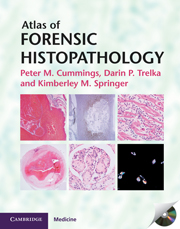1 - Post-injury intervals
Published online by Cambridge University Press: 05 August 2013
Summary
INTRODUCTION
Accurate dating of injuries has been an area of considerable research and debate. The body’s response to trauma is diverse and is affected by innumerable variables. A review of the literature will reveal a considerable variation in the time periods associated with injury development and appearance and that there is variation in rates of wound healing in different sites of the same individual. How much force caused the contusion? How deep is it? What is the underlying tissue – is it bone (like the skull or ribs), or is it elastic (such as the abdomen)? What was the nutritional status of the victim and would this be likely to affect their rate of healing? Would the decedent’s natural disease state(s) affect the way they heal such that it may be faster or, more likely, slower than in the general population? These are all issues that need to be considered to interpret the age of traumatic lesions, and still we are often left with a more realistic binary decision between “acute” and “remote.” It is imperative that you not permit yourself to get “painted in” to an age for a contusion or abrasion. These are best handled in windows of time, posited with the caveat that the vagaries of biology preclude a more precise time factor. Similar issues are encountered with dating subdural hematomas or cerebral contusions. In this chapter there are numerous photographic examples of injuries at many different time points. We have also included a number of tables, reviewed and collected from the existing literature for quick reference.
- Type
- Chapter
- Information
- Atlas of Forensic Histopathology , pp. 1 - 27Publisher: Cambridge University PressPrint publication year: 2000



